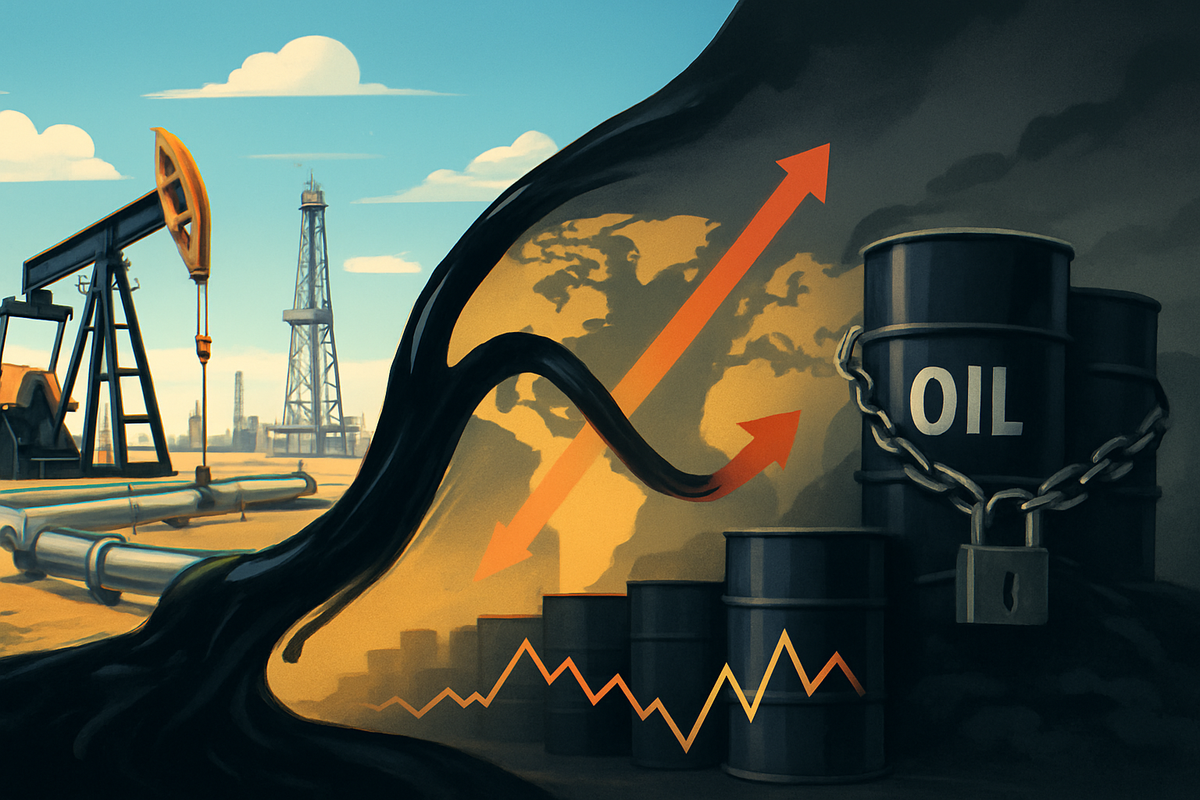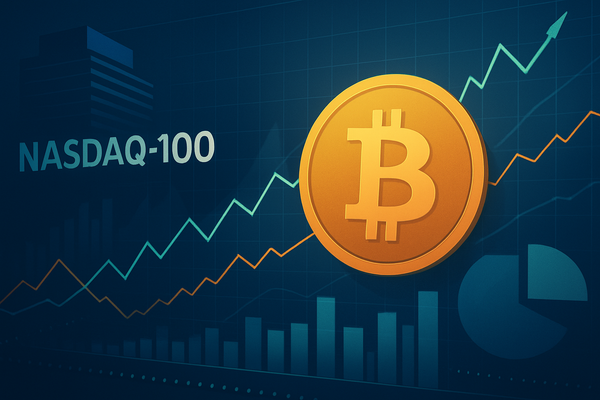Oil Market's Epic Tug-of-War: Record U.S. Output Clashes with Crippling Russian Sanctions

The global crude oil market in late 2025 is grappling with a profound paradox: unprecedented U.S. oil production levels are colliding head-on with the most aggressive Western sanctions yet imposed on Russia's energy sector. This epic tug-of-war is creating a volatile and often contradictory environment for global crude oil prices and supply, where geopolitical tensions vie with fundamental market oversupply. While the sanctions aim to starve Russia of vital revenue, the sheer volume of U.S. oil flowing into the market is largely tempering sustained price rallies, preventing the widespread supply crunch that might otherwise be expected.
As of October 2025, the United States has solidified its role as the world's leading crude producer, with output reaching a staggering 13.6 million barrels per day (bpd) in July and maintaining robust levels. Simultaneously, the U.S. and its allies have dramatically escalated their economic warfare against Russia, directly targeting its two largest oil companies, Rosneft and Lukoil. This dual dynamic has reshaped trade flows, forced major buyers to reconsider their sourcing, and injected a new layer of uncertainty into an already complex market, leading to significant price volatility and a re-evaluation of energy security worldwide.
A Deep Dive into the Dual Forces Reshaping Global Oil
The current state of the global oil market is defined by two powerful, opposing forces. On one side, the relentless growth of U.S. crude oil production continues to defy expectations, providing a substantial cushion to global supply. On the other, the Western allies, led by the U.S., have unleashed their most potent sanctions yet against Russia's energy behemoths, aiming to cripple Moscow's financial lifeline.
The United States has firmly established itself as the world's preeminent crude oil producer. In July 2025, U.S. crude oil production soared past 13.6 million bpd, an all-time high that the U.S. Energy Information Administration (EIA) projects will average 13.5 million bpd for both 2025 and 2026. This sustained output is largely a testament to technological advancements in shale drilling and enhanced operational efficiencies by major U.S. oil companies and independent shale operators, rather than a significant increase in active drilling rigs. Companies like ExxonMobil (NYSE: XOM) and Chevron (NYSE: CVX) continue to drive this growth, particularly in prolific basins like the Permian.
In a dramatic escalation of economic pressure, the U.S. Department of the Treasury's Office of Foreign Assets Control (OFAC) announced on October 22, 2025, that it was adding Open Joint Stock Company Rosneft Oil Company and Public Joint-Stock Company Oil Company Lukoil to its Specially Designated Nationals (SDN) and Blocked Persons List. This move, following similar asset-freeze sanctions by the United Kingdom on October 15, 2025, effectively cuts off these two Russian oil giants, along with dozens of their subsidiaries, from the U.S. dollar financial system. Critically, these sanctions carry the threat of secondary sanctions, meaning any foreign entity globally that continues to conduct significant transactions with Rosneft or Lukoil risks being penalized by the U.S. The European Union also unveiled its 19th sanctions package on October 23, 2025, including a phased import ban on Russian liquefied natural gas (LNG) from April 25, 2026, and further asset freezes. Together, Rosneft and Lukoil account for nearly half of Russia's crude production and exports, making these sanctions a formidable blow.
This moment is the culmination of a series of events: from the initial sanctions following Russia's full-scale invasion of Ukraine in February 2022, through the implementation of the G7 price cap in late 2022, to earlier U.S. sanctions on Russia's third and fourth largest oil companies, Surgutneftegaz and Gazprom Neft, in January 2025. The current, more aggressive stance is partly attributed to a "unique policy window" created by already depressed oil prices, allowing the Trump administration to exert maximum pressure without immediately destabilizing global markets. Initial market reactions saw Brent crude futures rally by over 4% to above $67 per barrel immediately after the sanctions, but this surge was quickly tempered by broader oversupply concerns. Major buyers like China and India have reportedly paused new seaborne purchases of Russian crude, seeking alternative supplies and reconfiguring their logistics to avoid secondary sanctions.
Winners and Losers in the Geopolitical Oil Game
The intensified clash between robust U.S. oil output and sweeping sanctions on Russia is creating clear winners and losers across the global energy landscape, fundamentally altering market dynamics for producers, refiners, and shippers.
U.S. Shale Producers emerge as significant beneficiaries. With a substantial portion of Russian crude facing severe restrictions, U.S. operators, particularly those extracting light, sweet crude from basins like the Permian, are well-positioned to expand their market share and capitalize on improved pricing power. Companies like EOG Resources (NYSE: EOG) and Pioneer Natural Resources (NYSE: PXD) are poised to accelerate drilling programs and enhance export infrastructure to meet increased demand from Asian markets. The reliability and accessibility of U.S. crude become a premium in a market where geopolitical risk is paramount, reinforcing the strategic importance of domestic production.
Conversely, Russian Oil Majors such as Rosneft and Lukoil are the primary losers. The U.S. sanctions effectively cut them off from the dollar-based financial system, making it incredibly difficult to conduct international transactions, secure financing, and engage with global partners. Lukoil has already indicated plans to divest its international assets, including refineries in Bulgaria and Romania, highlighting the operational challenges. While Russia will likely employ "shadow fleets" and alternative payment methods, these circumvention tactics come with increased costs and deeper discounts on Urals crude, leading to significantly reduced revenues for these companies. Their shares saw immediate drops of 7-9% following the sanction announcements, signaling the severe financial impact.
Major Refiners in India and China face a mixed, but immediately challenging, outlook. These nations became crucial buyers of discounted Russian crude post-2022, importing around 1.8 million bpd and 2 million bpd respectively in the first half of 2025. The new sanctions directly target the shipping, insurance, and trading networks that facilitated these advantageous purchases. Indian refiners like Reliance Industries (NSE: RELIANCE) and Indian Oil Corporation (NSE: IOC) have reportedly paused new Russian oil orders, forcing them to seek costlier alternatives from the Middle East, Africa, or the U.S. This shift could significantly raise their input costs, squeezing profit margins and potentially increasing India's annual import bill by billions of dollars. Chinese state-owned refiners have also temporarily suspended seaborne Russian crude purchases. While these countries will ultimately diversify their supply chains, the short-term disruption and increased costs are undeniable.
The Global Shipping Industry experiences a bifurcated impact. Mainstream, legitimate shipping companies adhering to Western sanctions face reduced opportunities to transport Russian oil due to heightened compliance risks and insurance withdrawals. However, the demand for the "shadow fleet"—older vessels operating outside standard regulations, often with non-Western insurance—has surged. These vessels, while operating at significantly higher risk, are commanding increased tanker rates, making their operators "winners" in terms of immediate business, despite the ethical and regulatory complexities involved. Panama and Australia have also taken action against vessels in the shadow fleet, adding another layer of operational risk.
Broader Ripples and Historical Echoes
The clash between record U.S. oil output and the intensified sanctions on Russia transcends immediate market fluctuations, embedding itself within broader industry trends, geopolitical realignments, and evolving policy frameworks. Its wider significance will echo through the global economy for years to come.
This event directly impacts the Energy Transition. The EU's phased ban on Russian LNG, effective April 2026, and its broader ambition to eliminate Russian gas imports by 2028, underscore a reinforced commitment to energy decoupling and accelerated investment in alternative energy sources and infrastructure. This push, however, is juxtaposed with the persistent global reliance on fossil fuels, highlighted by the temporary oil price spikes following the sanctions. This tension creates a delicate balance between urgent energy security concerns and long-term climate goals. The sanctions also exacerbate Geopolitical Instability, further weaponizing energy in international conflicts. By targeting Russia's primary revenue stream, the West aims to degrade Moscow's ability to finance the war in Ukraine, leading to significant geopolitical realignments and enhancing the strategic importance of non-Russian energy producers.
The ripple effects extend to OPEC+ and other non-OPEC producers. The OPEC+ alliance, led by Saudi Arabia and Russia, faces a complex challenge. While cautiously unwinding previous production cuts with a modest increase of 137,000 bpd for December 2025, the group must balance maintaining price stability with preventing market share erosion by robust non-OPEC+ supply. Kuwait's Oil Minister has indicated OPEC's readiness to raise production further if shortages emerge, signaling a shift in demand towards Gulf producers. Other non-OPEC+ nations like Brazil (NYSE: PBR), Canada (TSX: CNQ), and Guyana are also poised to contribute to global production growth, potentially offsetting sanctioned Russian supply.
From a Regulatory and Policy standpoint, the effectiveness of the escalated U.S. sanctions hinges on rigorous enforcement, particularly the application of secondary sanctions to deter third-party compliance. The Trump administration's approach signals a more assertive use of sanctions. Concurrently, the U.S. is expanding its LNG export capacity, aiming to increase total LNG exports to 15 Bcf/d in 2025 and 16 Bcf/d in 2026, further solidifying its role as a global energy supplier. The EU's 19th sanctions package also targets Russia's "shadow fleet" and military supply chains, aligning with its broader energy security and decarbonization goals.
Historically, this situation draws parallels to past energy crises like the 1970s Arab oil embargo or sanctions on Iran and Venezuela, which led to market fragmentation and rerouting of trade flows. However, the October 2025 sanctions targeting Rosneft and Lukoil simultaneously represent an unprecedented step in scope, being the first time the U.S. has targeted two major petroleum companies from the same country at once. Analysts suggest that the prevailing "depressed oil prices" prior to October created a "unique policy window" for these aggressive measures, contrasting with historical instances where sanctions were often imposed during periods of existing market tightness.
The Road Ahead: Navigating Volatility and Transition
The global oil market is at a critical juncture, navigating the immediate impacts of geopolitical sanctions and robust U.S. output while simultaneously grappling with longer-term structural shifts driven by the energy transition. The road ahead promises continued volatility and requires strategic adaptation from all players.
In the short term (next 6-12 months), the market is likely to remain in a state of oversupply, with downward pressure on oil prices. The EIA forecasts Brent crude to average $62/bbl in Q4 2025 and $52/bbl in the first half of 2026. Russia will likely face deeper discounts on its crude, eroding net revenues even if physical export volumes are maintained through the "shadow fleet" and alternative payment systems. However, the threat of secondary sanctions is already causing some major buyers, particularly Indian refiners, to pause transactions and seek alternative supplies from the Middle East and the U.S., which could increase their import costs. OPEC+ will continue its delicate balancing act of gradually unwinding production cuts to regain market share without causing a price collapse.
Looking to the long term (beyond 1 year), the sustainability of U.S. shale growth will be crucial. While forecasts remain strong, a prolonged period of lower oil prices could eventually impact drilling activity and production rates. Russia's long-term strategy will focus on solidifying new market alignments and developing non-Western financial and logistical networks, but deep discounts are likely to be a persistent challenge. The energy transition remains a defining long-term factor; while BP recently revised its peak oil demand forecast to around 2030 due to robust demand in emerging markets, the IEA anticipates a significant slowdown in demand growth by 2028, with electric vehicles (EVs) projected to displace over 5 million bpd of oil globally by 2030, with China leading this shift.
Strategic pivots will be essential. The United States will continue to leverage its position as a top oil producer, potentially adjusting drilling activity based on price signals and expanding LNG exports. Russia will further adapt by deepening discounts, relying on its "shadow fleet," and exploring non-Western insurance and payment systems. OPEC+ will strive to manage global supply to stabilize prices while defending its market share. Major oil companies, like BP (LSE: BP), are already recalibrating their long-term strategies, with some showing a pivot back towards fossil fuels after earlier aggressive renewable targets. Major consumers like India and China will continue to diversify their crude procurement away from Russia, potentially leading to higher import costs but also spurring domestic energy investments and renewables.
Potential scenarios range from a prolonged period of high supply and lower prices, which is widely forecast, to supply shocks and higher prices if geopolitical escalations or highly effective sanctions genuinely curtail a large portion of Russian physical supply. A market rebalancing with moderate prices is also possible, contingent on OPEC+'s ability to precisely manage supply amidst fluctuating demand.
Wrap-Up: Navigating a New Energy Order
The global oil market in late 2025 is defined by an unprecedented confluence of factors: record U.S. crude oil production and the most far-reaching sanctions ever imposed on Russia's energy sector. This dynamic has created a market characterized by volatility and a structural oversupply, largely offsetting the potential for price spikes from geopolitical tensions.
Key takeaways include the U.S.'s role as a critical supply buffer, the significant financial pressure on Russian oil majors, and the immediate re-evaluation of supply chains by major Asian buyers. Despite initial price reactions to the sanctions, the overarching theme of global oversupply continues to exert downward pressure on crude prices, with forecasts pointing towards a bearish outlook into 2026.
Moving forward, the market will remain in a state of flux. The effectiveness of the Russian sanctions, particularly regarding enforcement against third-country facilitators, will be paramount. OPEC+'s ability to manage supply amidst rising non-OPEC+ output and evolving demand dynamics will also be crucial. This period underscores a significant shift in global energy dynamics, where the U.S.'s production capacity offers a critical counterbalance to geopolitical risks, and sanctions accelerate a realignment of global oil trade flows.
For investors, a cautious approach is warranted. Watch closely for the practical impact of sanctions enforcement on Russian export volumes and trade routes, especially concerning India and China. Monitor OPEC+'s production strategy and global economic indicators for shifts in demand. Also, keep an eye on U.S. shale resilience, as sustained lower prices could eventually impact production growth. Finally, remain vigilant regarding geopolitical developments, as unforeseen events could still trigger price spikes despite the current oversupply. The long-term implications include potential shifts in investment towards more cost-efficient energy stocks and a continued, albeit perhaps slower than anticipated, transition towards renewable energy.
This content is intended for informational purposes only and is not financial advice



